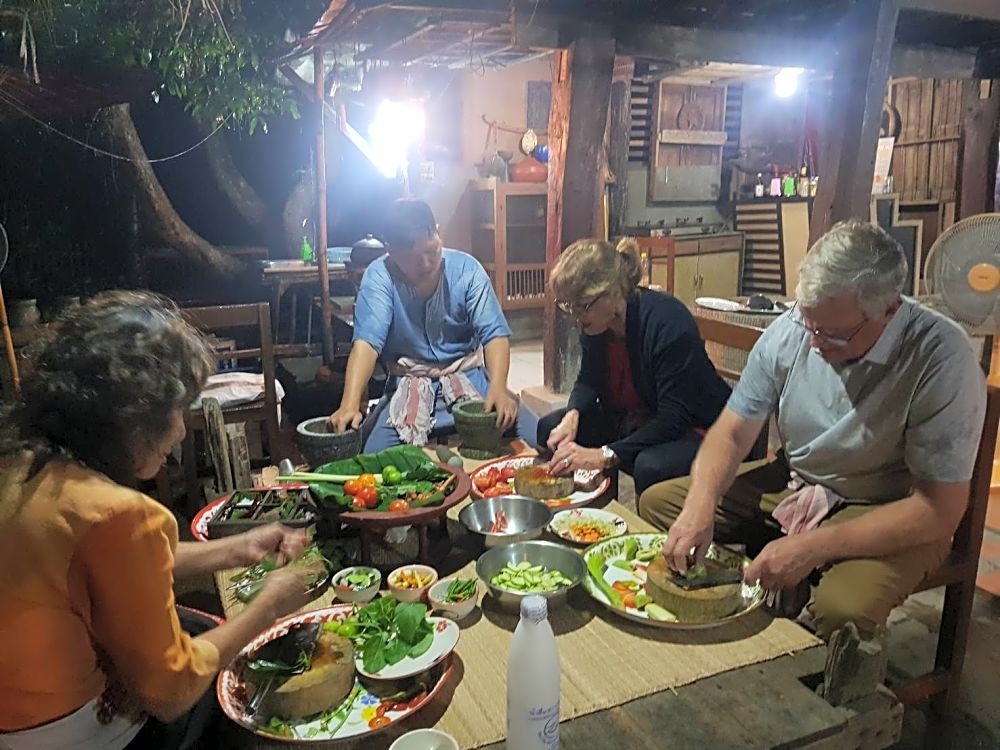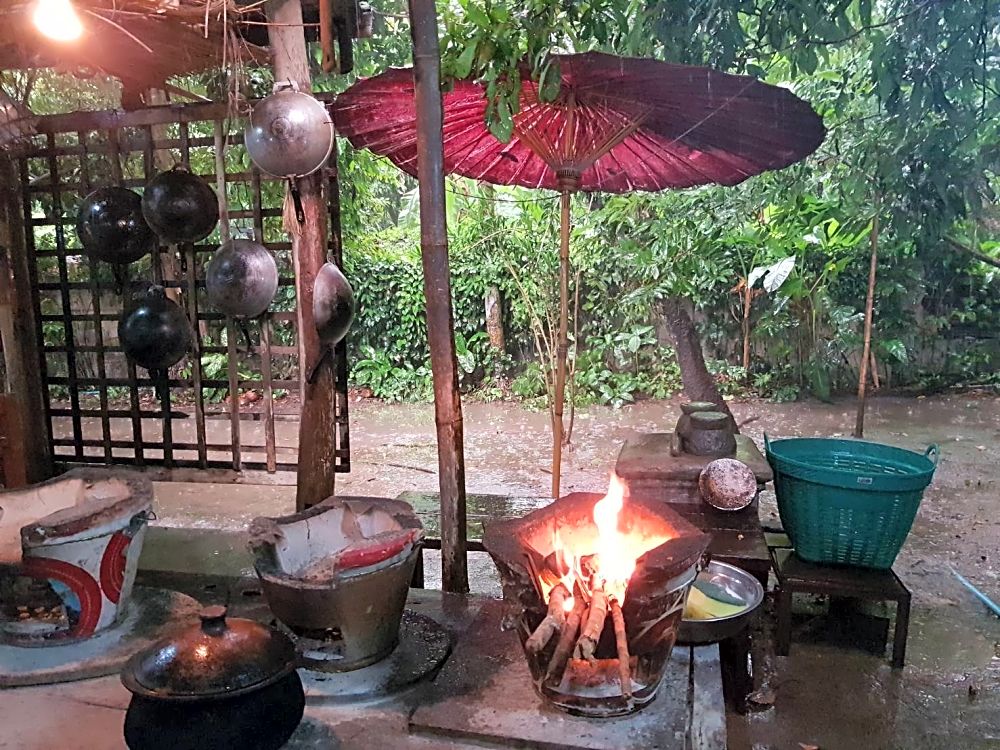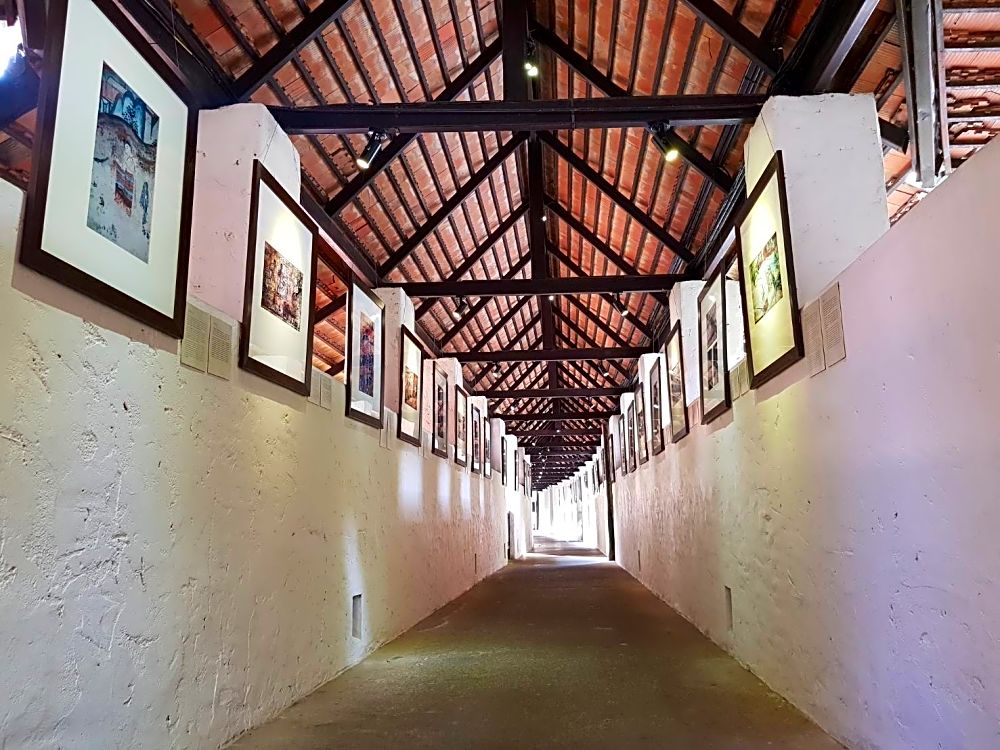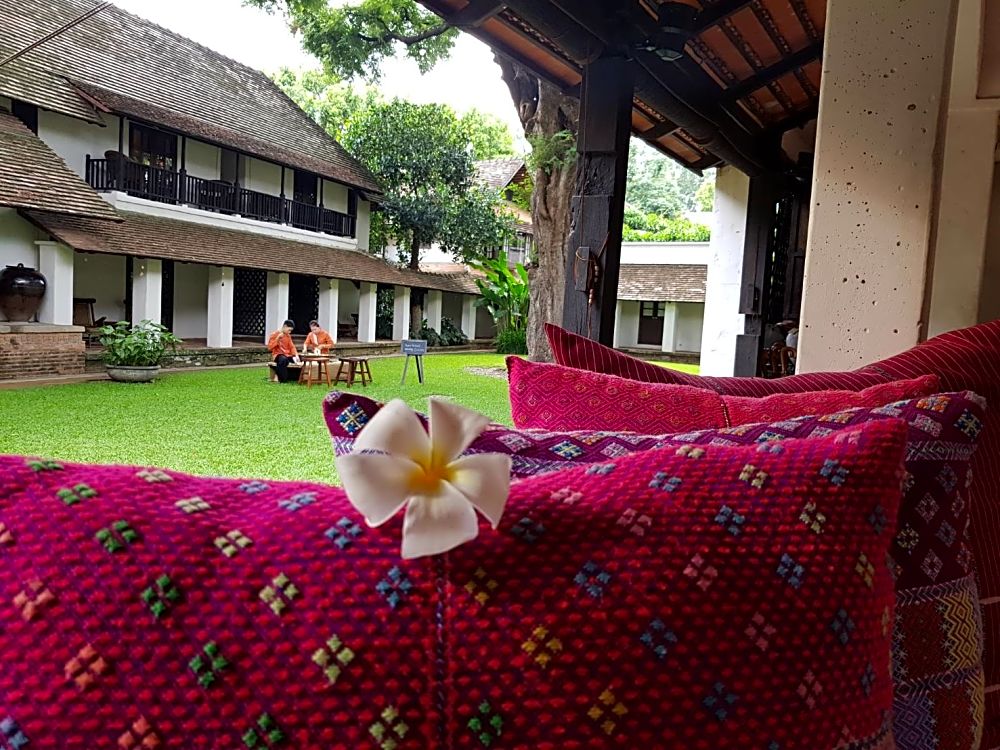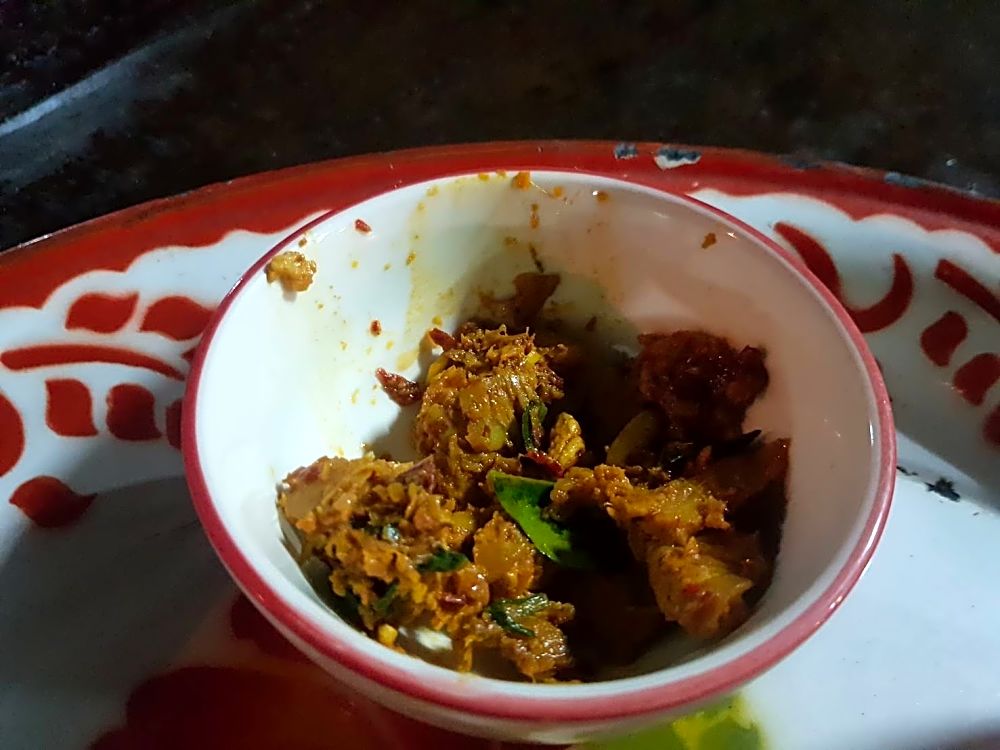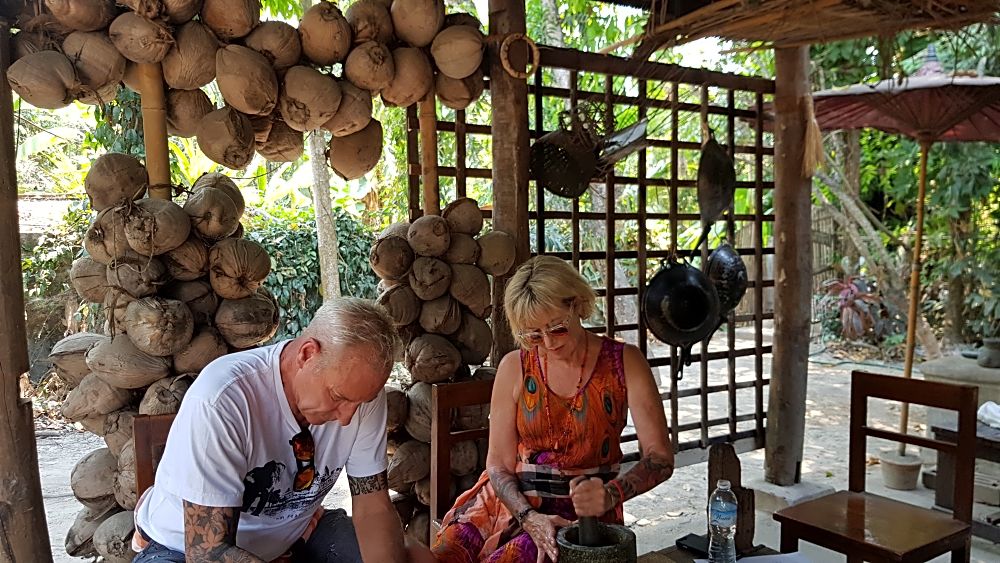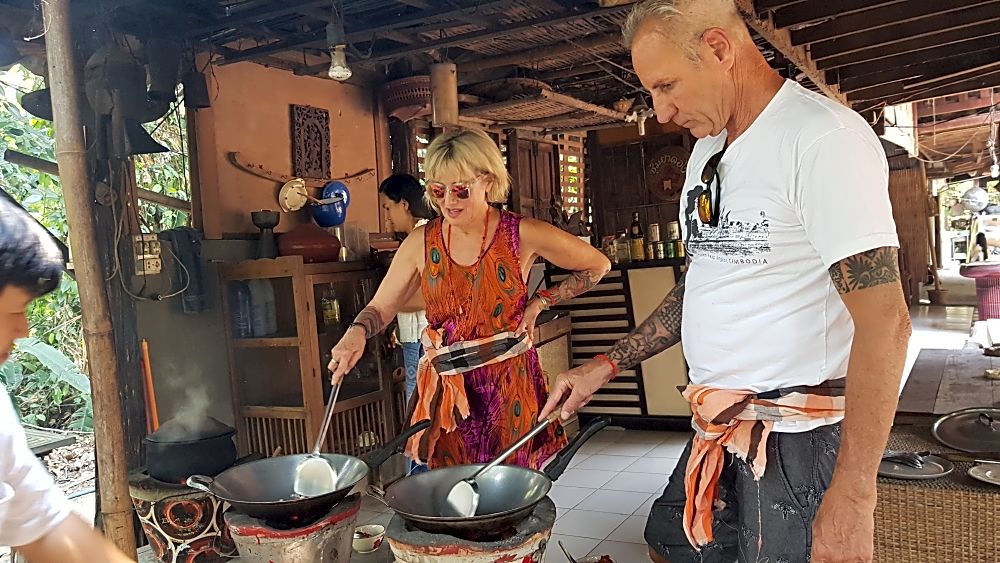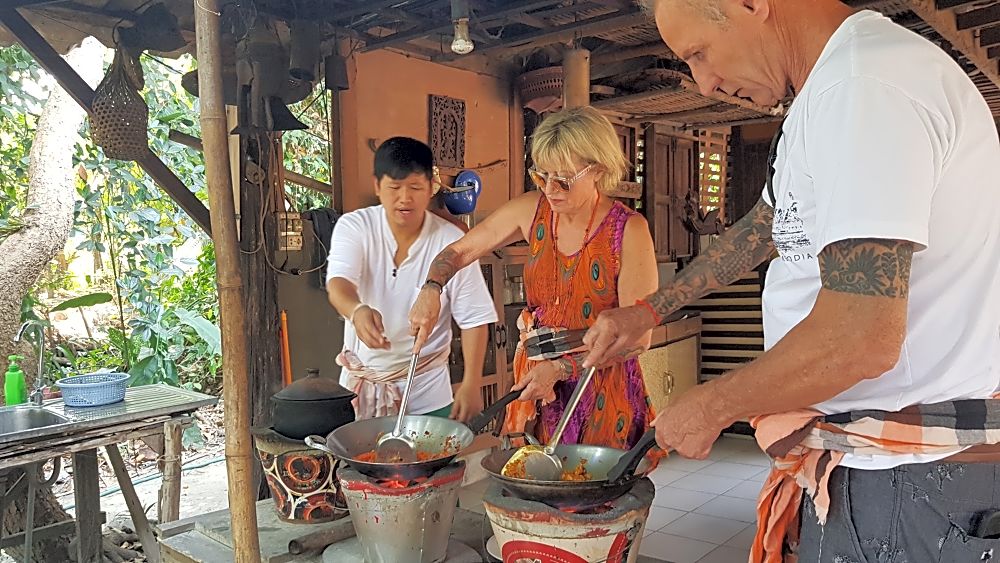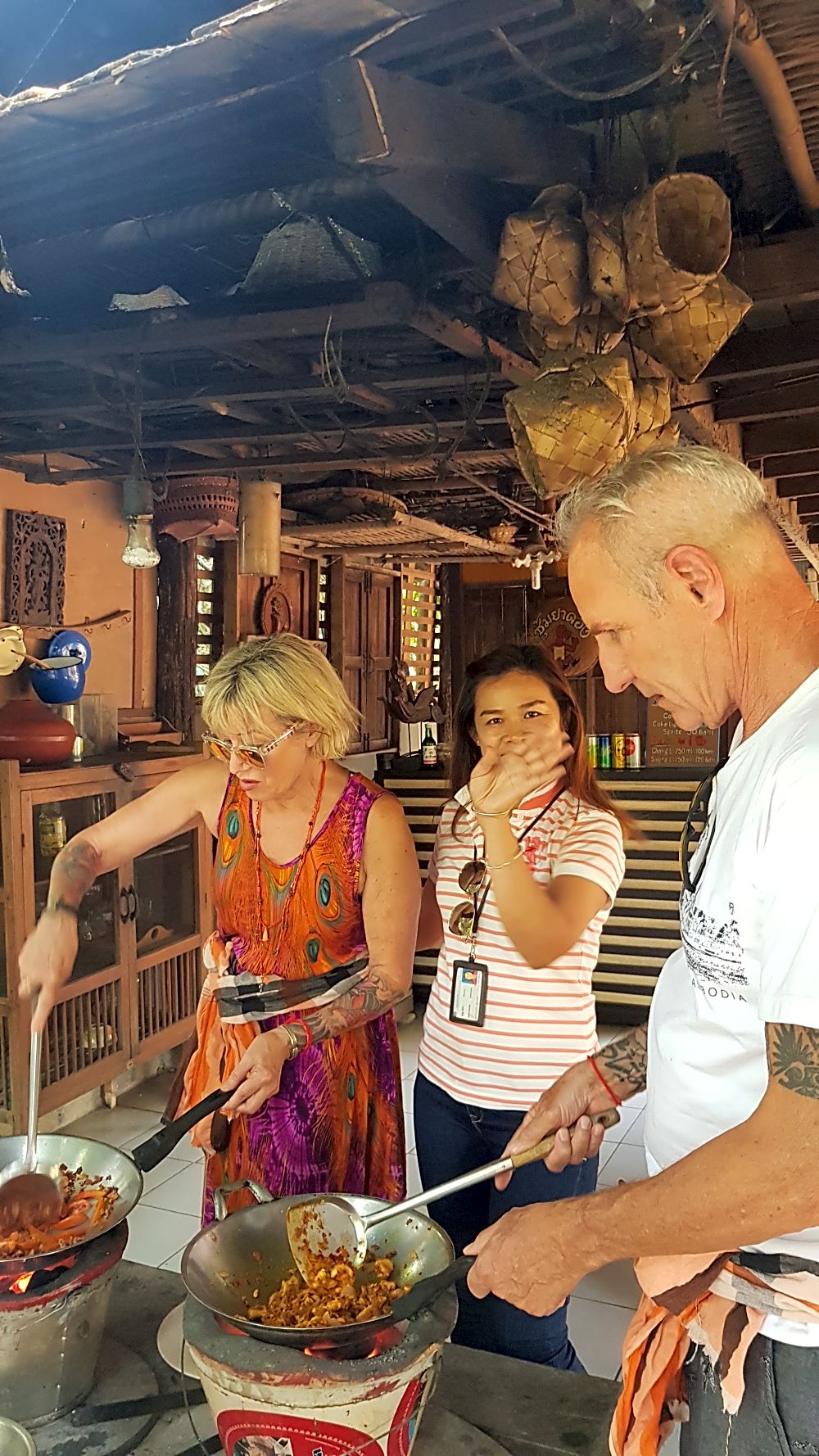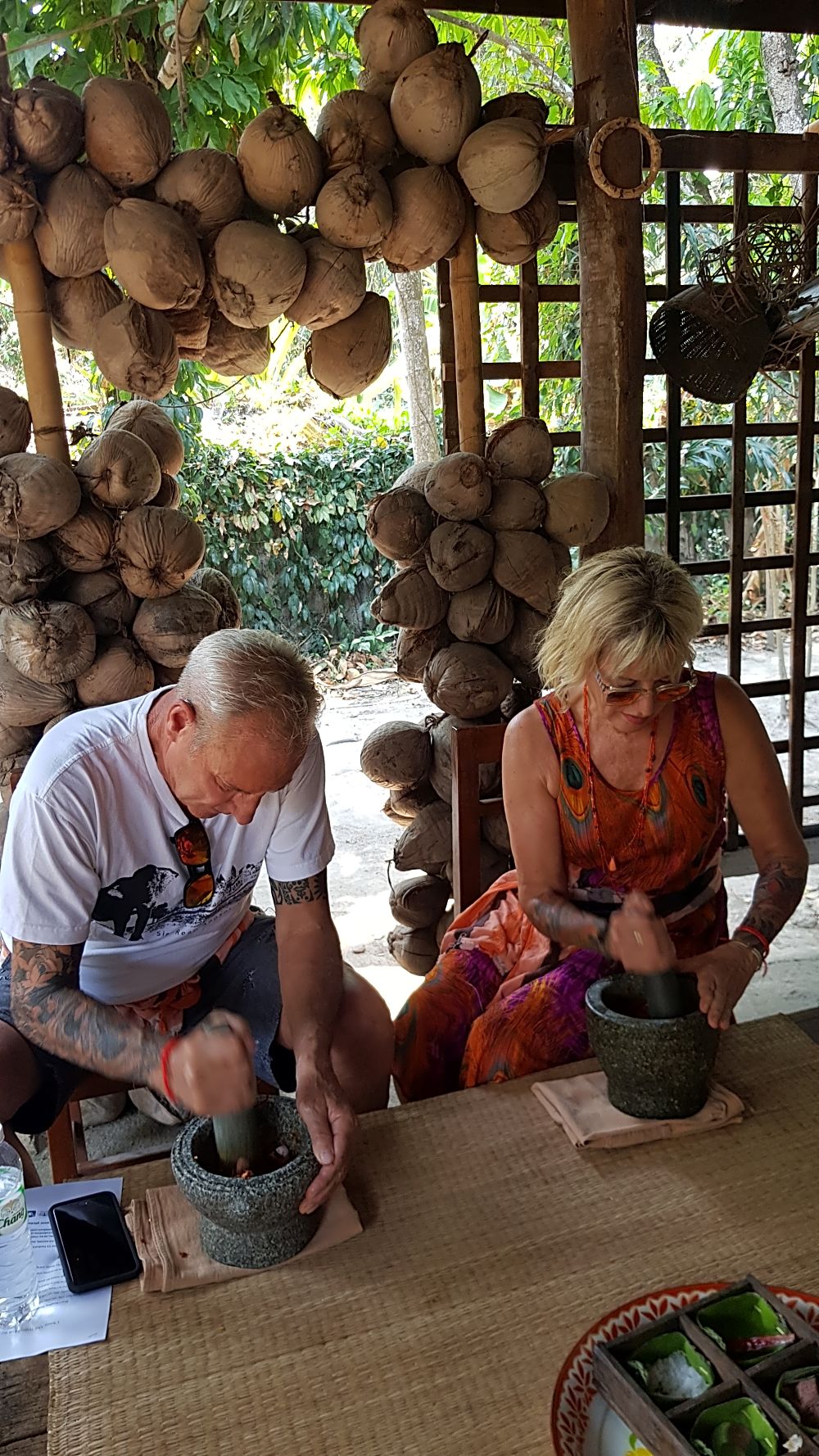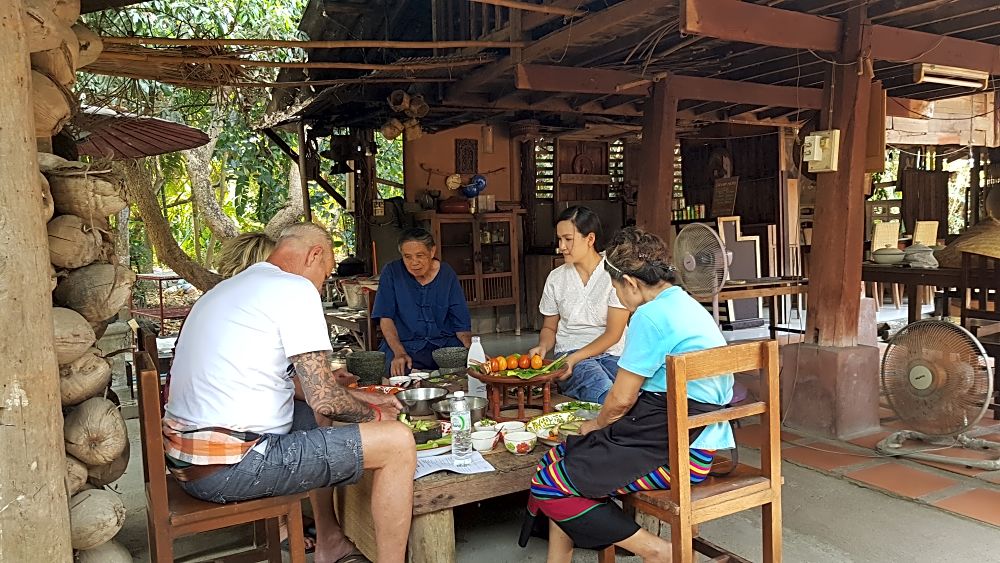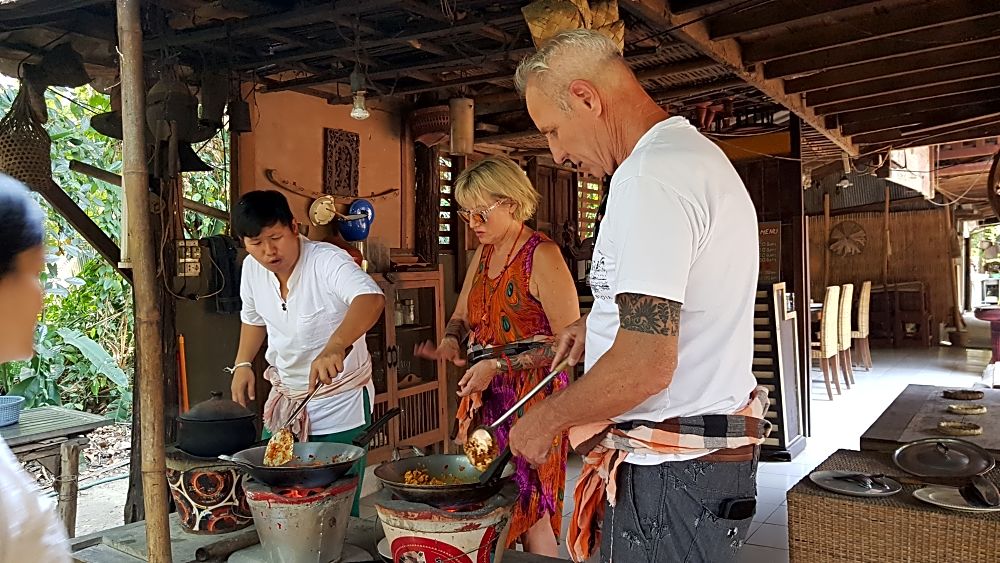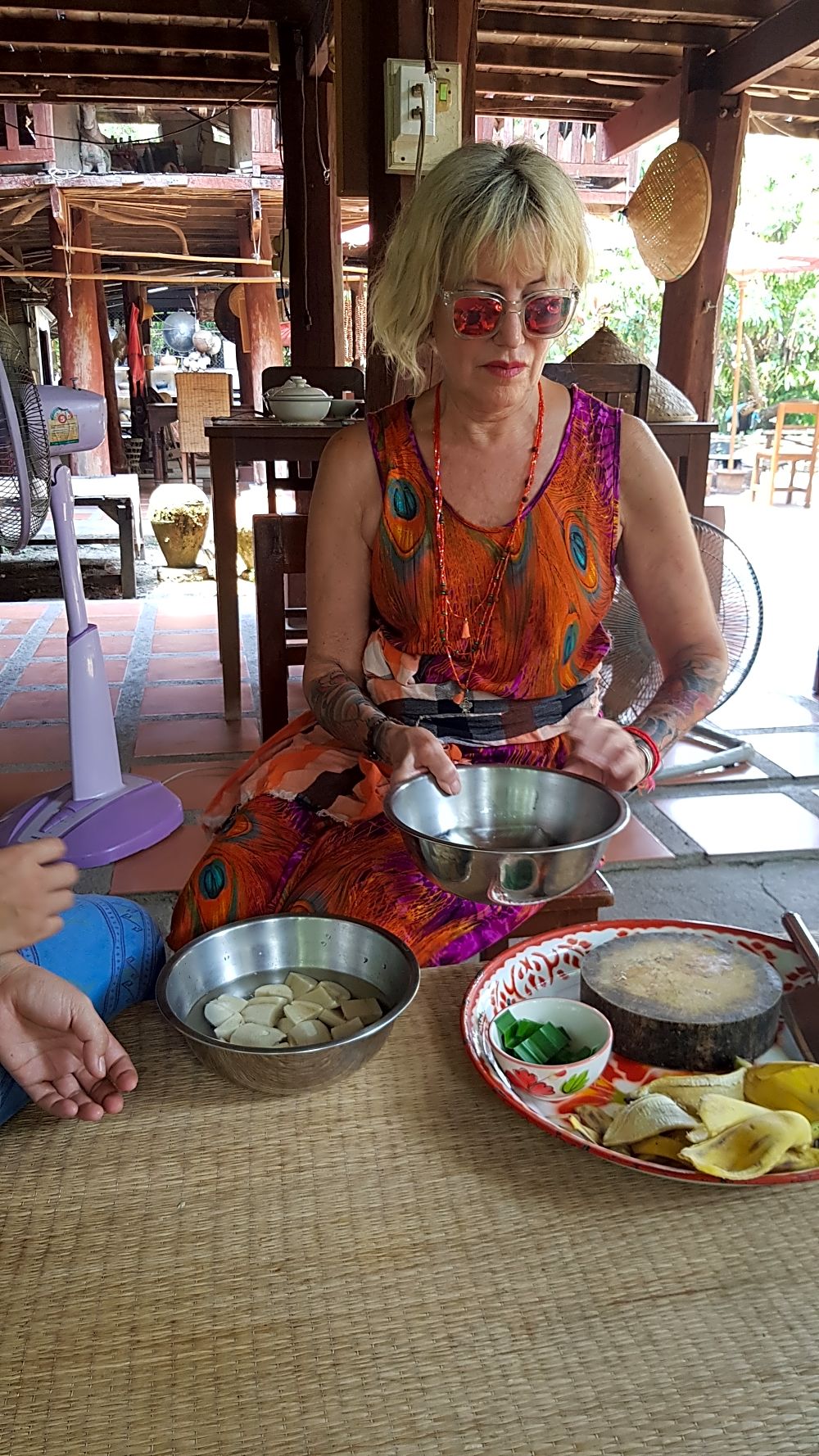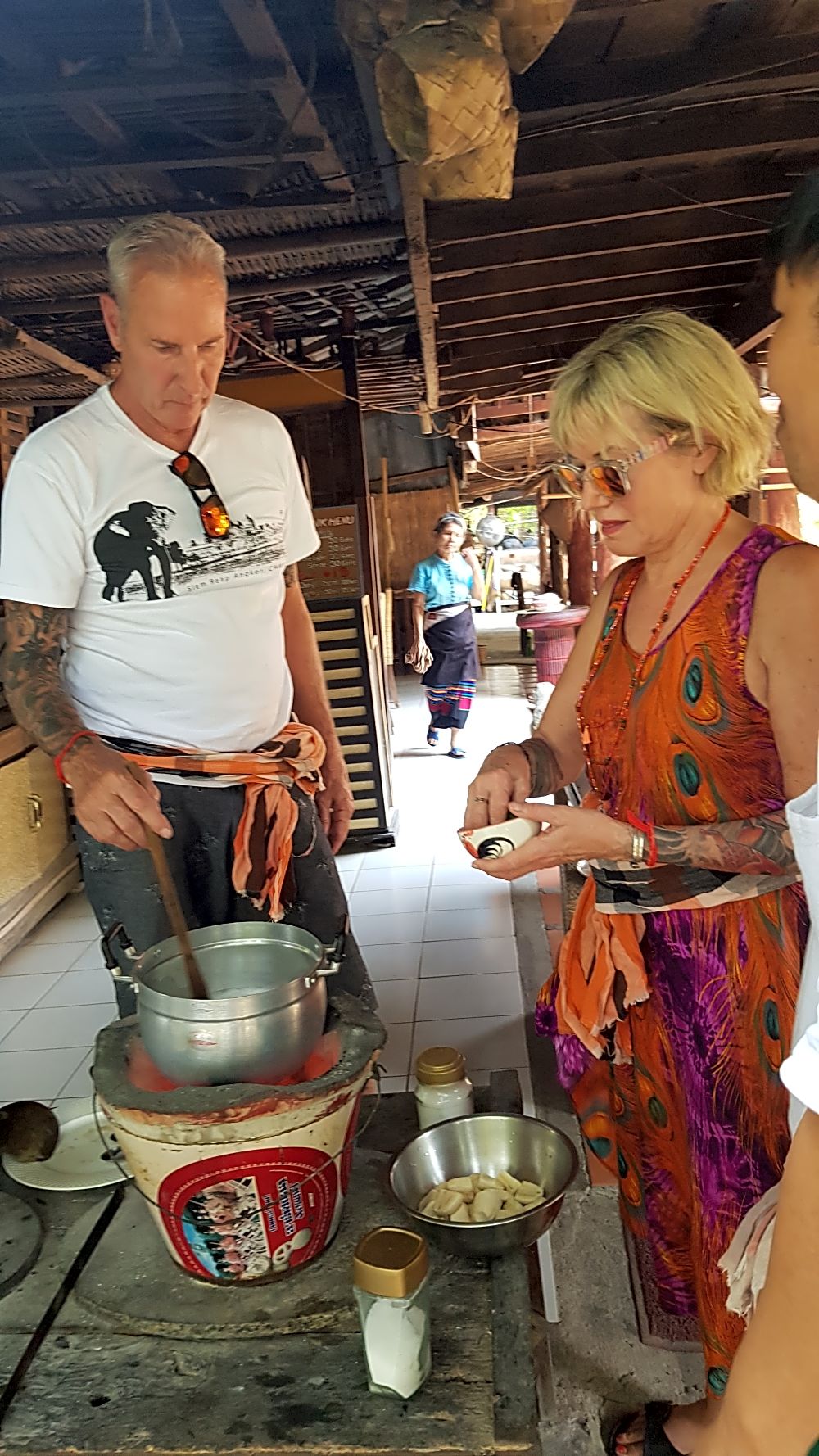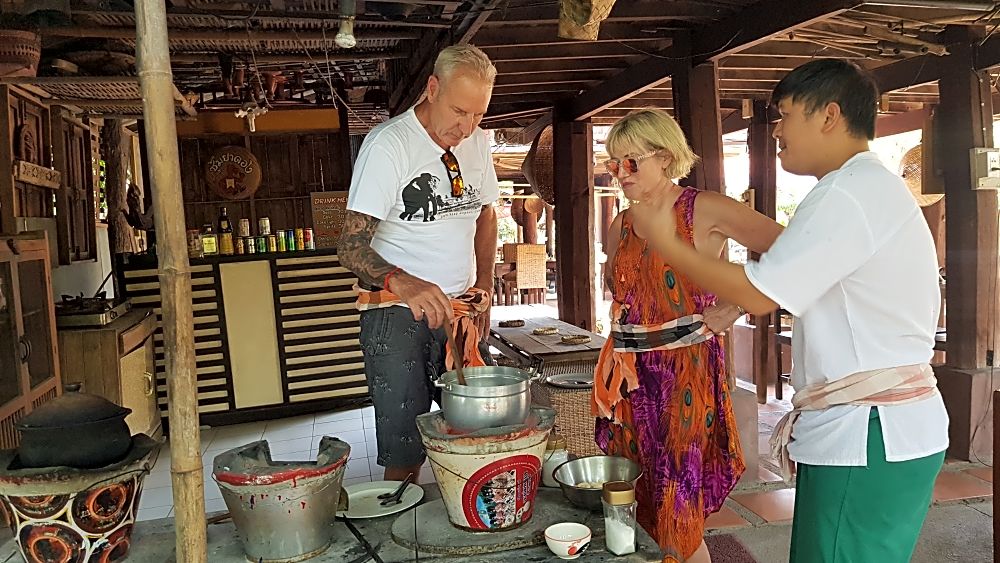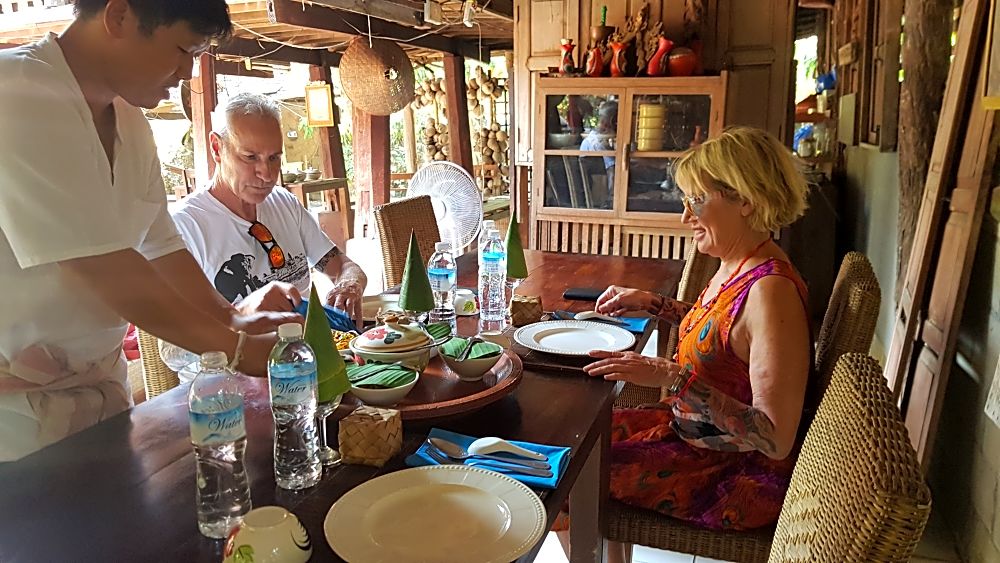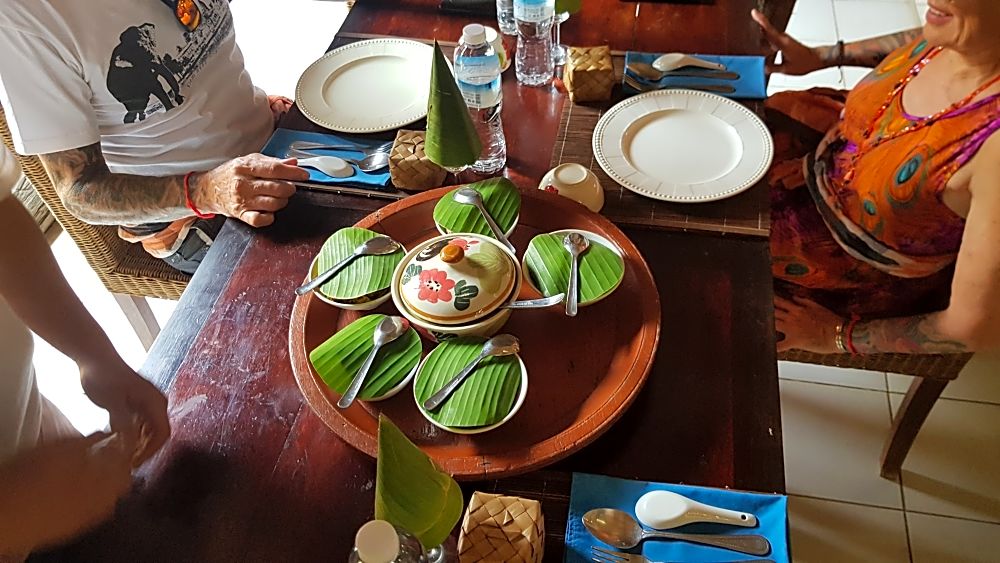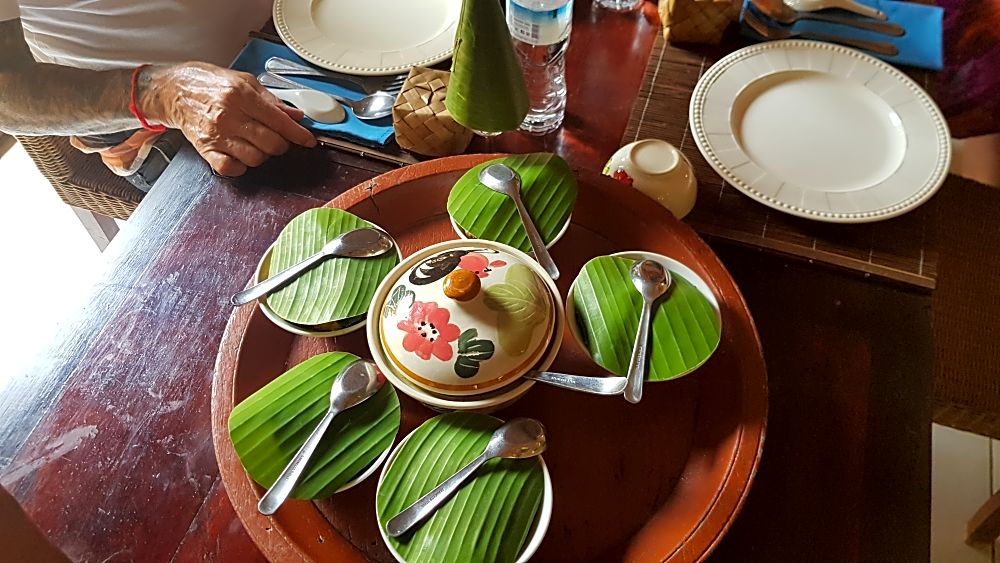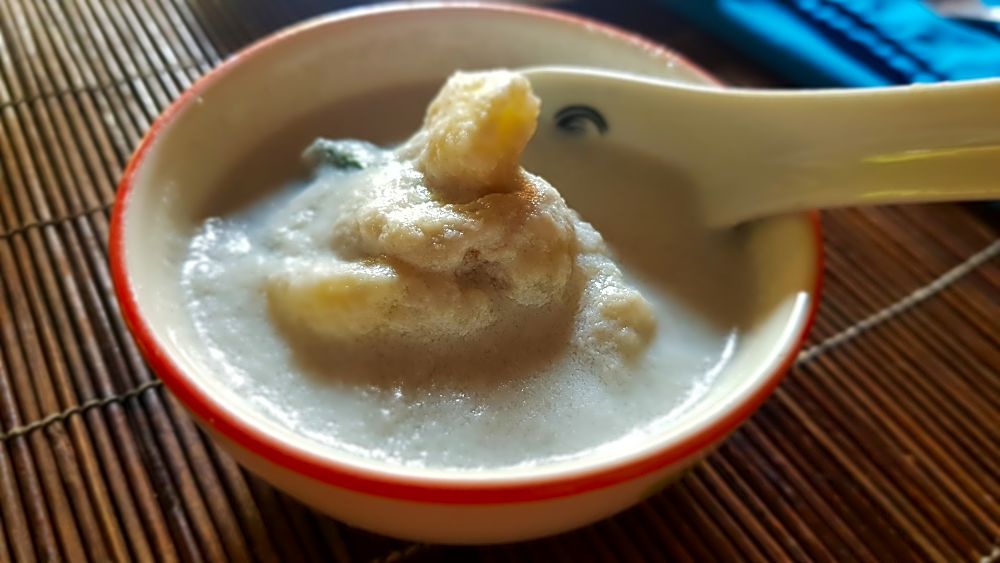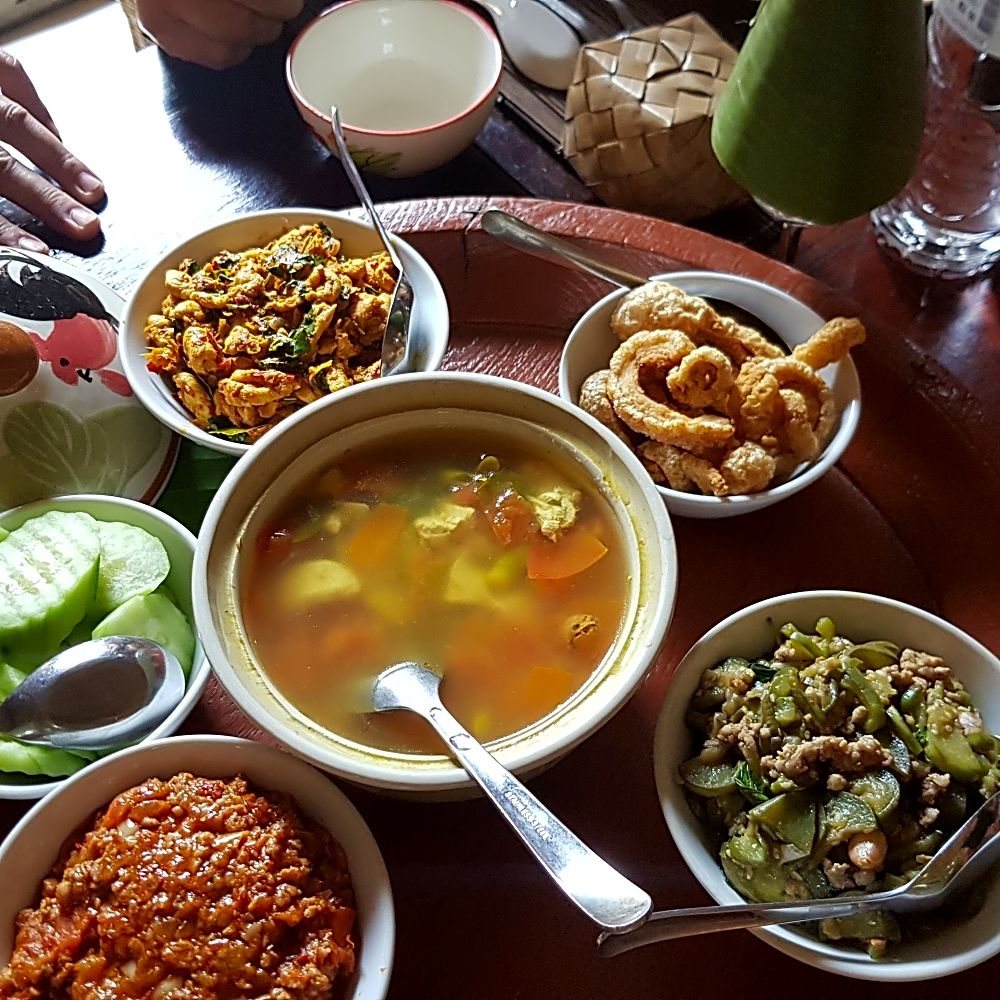Lanna Culture & Private Cooking Class
Spend a time with a Lanna family at their home where you’ll learn about the culture and experience firsthand how a typical Lanna family lives.
This is not the usual cooking class you read about online or in brochures. Instead of a formal class-style cooking lesson, you will spend a private time with a Lanna family at their home where you’ll learn about the culture and experience firsthand how a typical Lanna family lives. Your English speaking guide will be on hand to translate and narrate to you in English.
Your host will also show you how to make the pastes used in the preparation of Lanna meals. You will learn what makes Lanna cuisine different from the normal Thai dishes. Most importantly, you will find out cooking secrets that are not disclosed in recipe books and cooking videos!
Afterward, you will tuck in and enjoy the meals you prepared in the way Lanna families eat their meals. It will be an experience you will not forget. Best of all, there are no dishes to wash!
Read more about the Lanna Kingdom below.
Itinerary:- Pick up from your hotel at 9:00 in the morning in an air-conditioned van.
- Arrive at the home of the Lanna host.
- Learn about Lanna Culture, its people and their lifestyle.
- Prepare the ingredients and cook the selected dishes with step-by-step guidance by your host.
- Learn secrets that you won’t find in cooking videos and recipes.
- Have lunch and enjoy the dishes you cooked!
- After your meal, head back to your hotel with a full tummy for a nice rest!
- Traditional herbal welcome drink.
- Cost of ingredients for the dishes.
- Lunch.
- English speaking tour guide.
- Transportation. Pick-up and drop-off
- Bottled drinking water.
- Personal expenses
- Beverages
Lanna Kingdom
Literally, ‘Lanna’ is translated to 'Kingdom of a million rice fields'. The Lanna Kingdom used to occupy most of Northern Thailand as well as neighboring parts of Myanmar (Burma), China and Laos from the 13th to the 18th century.
In 1296, Chiang Mai, which means ‘new city’, was built as the capital of the kingdom. After being under Burmese rule for many years, the Lanna Kingdom finally became part of Siam. Siam later changed its name to Thailand in 1949.
Although Thai is the official language, many locals in Chiang Mai, especially the older generation still speak the Lanna language. The traditional Lanna culture is still practiced today. Family values are an important part of that tradition.
As you explore certain parts of Chiang Mai, you will notice many old buildings with beautiful Lanna architecture, which illustrate the glorious past of the Lanna Kingdom. Lanna Cuisine Lanna cuisine refers to food originating in the Northern part of Thailand. These uniques dishes are not commonly found in other parts of Thailand and almost certainly not in Thai restaurants abroad unless the owners are from the region.
What makes Lanna cuisine different from the normal Thai dishes is that fewer spices are used. Instead, lighter flavors such as soft chili peppers, ginger or galanga are added.
While the staple is rice for most people in Thailand, people in the north prefer steamed sticky rice or ‘khao niaw’, and they use their fingers when they eat it with curries and other food.
Here are a few must-have Lanna dishes while you are in Chiang Mai.
‘Khao Soi’
‘Khao Soi’ is possibly the best known Lanna dish with egg noodles in a coconut milk-based curry sauce. The original version includes a piece of chicken drumstick that is so well-prepared that the meat easily falls off the bone.
It is usually garnished with fried egg noodles on top. Finely sliced shallots, coriander, and pickled mustard greens are also added. A slice of lime is squeezed, and ground chili is added to the curry for a flavorful meal!
‘Sai Oua’
‘Sai Oua’ is also known as Chiang Mai sausage. This tasty, grilled spiced pork sausage is found everywhere in the North. It is made from minced pork meat, chopped lemongrass, galangal, kaffir lime, coriander, and red curry paste.
‘Kaeng Hang Lei’
‘Kaeng Hang Lei’ or Burmese Curry, is a tender, stewed pork belly curry with a blend of turmeric, tamarind, ginger, and garlic. It is less spicy than Khao Soi and most of the curries in Thailand.
‘Khanom Jeen Nam Ngeow’
‘Khanom Jeen Nam Ngeow’ is a popular dish adapted from the recipe of the Tai Yai people from Myanmar who now live around the north of Thailand. It is less spicy than the other curries.
‘Khanom Jeen’ means fresh rice noodles and ‘Nam Ngiao’ is a spicy tomato infused broth. Traditionally, the main ingredient is the dried stamens of the cotton tree blossoms. Other ingredients include chili paste, dried fermented soybean, tomatoes, ground pork, pork meat and cubes of congealed pig’s blood cooked in a pork broth. The salty and sour broth is served on top of the fresh rice noodle. Vegetables, fried chilies, and ‘Keb Moo’ (fried pork rind) are added on top of the dish.
‘Kaeng Khanun’
Similar to ‘Tom Yum’, ‘Kaeng Khanun’ is a hot and sour soup. What makes it different is that it is made with young unripe jackfruit and cherry tomatoes Served with chunks of pork, it offers a uniquely flavorful experience.
‘Moo Yor’
One of the most common food in the North, Moo Yor is a boiled pork sausage with a white complexion and rubbery texture. On its own, it can’t compete with Sai Oua but Moo Yor can be made into Yum Moo Yor which infuses the steamed pork with a fiery salad of chilies, fish sauce, lime, and coriander.
Here are two popular Northern Thai chili sauces that are used as dips at meals:
‘Nam Prik Ong’
‘Nam Prik Ong’ is the favorite of the two, made with pork, tomatoes, and northern Thai additions of fermented shrimp and soybeans. It is usually served with steamed vegetables and sticky rice.
‘Nam Prik Noom’
The other popular dipping sauce is ‘Nam Prik Noom’, a fiery dip made with roasted green chili, onions, and garlic.


